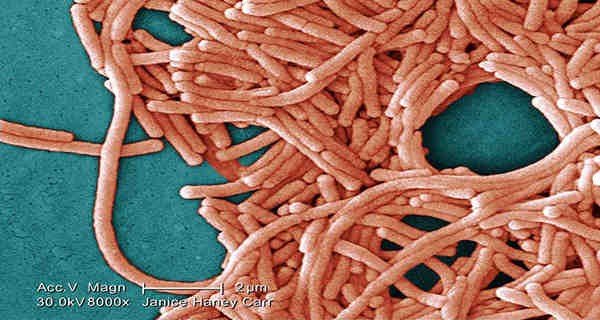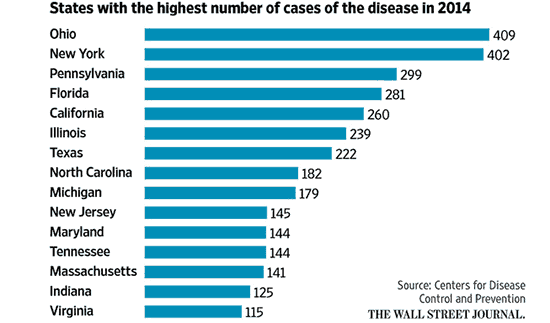New York mayor Bill de Blassio issued a press release statement on August 4th 2015 about an outbreak of legionaries’ disease in NYC.
“We have 86 cases reported and sadly 7 deaths. Our hearts go out to everyone who is part of their families… If you have symptoms that might be associated with Legionnaires disease please seek treatment immediately whether thru your own private doctor or thru an emergency room like here at Lincoln. Symptoms include fever, caught and shortness of breath. 5 buildings have tested positive for legionella.” (Source)
The fatality rate is 8.1% (7 deaths) but it can get as high as 30%.
The mayor has also outlined sanctions and regulations requiring inspectors for property owners hose buildings test positive for the disease.
The likely cause of the outbreak stated by officials are cooling towers that can release a mist that carries the legionella bacteria. Of the 17 towers in the area, 5 he tested positive and are now all decontaminated. Between 8000 and 18000 cases of the disease are reported each year but this outbreak was discoed in a Bronx hotel and in equipment at a hospital
This is the largest outbreak of legionnaire’s disease in the city’s history and all of them have been in the south Bronx. Many more cases are expected to be reported.
What is the disease?
The disease has similar characteristics to pneumonia and the bacteria thrives in aquatic systems such as central air conditioning, cooling tower, evaporative coolers, humidifiers, spas, water heating systems showers, fountains etc.
People get Legionnaires’ disease when they breathe in a mist or vapor (small droplets of water in the air) containing the bacteria. One example might be from breathing in droplets sprayed from an air conditioning that has not been properly cleaned and disinfected. The bacteria are not spread from one person to another person.
You can get the disease at any age but most of the cases will be middle aged people particularly smokers or lung disease sufferers. 90 % of the cases are missed because legionnaires is rare and has similar symptoms with pneumonia.
It is treated by a large course of antibiotics that should last about 3 weeks but a delay in the treatment will mean higher fatality rate.
If you have water storage tanks or bottles:
- Make sure that they are fully filled
- Store the water in a place where the temperature in bellow 68 F (20 C) all year long – The bacteria are dormant below this temperature;
- If you are not sure, boil the water before you drink it
- make sure you’ve read: Eight Deadly Survival Myths About Water
- Choose appropriate containers for water storage; disinfect before use;
- Treat water with a chlorine bleach solution prior to storage (or copper and silver ionisation)
- Use containers that can be sealed tightly
- Replace water every six months
You may also like:
 10 Insects You Should Never Kill On Your Property
10 Insects You Should Never Kill On Your Property
The ‘Superweed’ That Saved Large Communities During The Great Depression (Video)
18 Vintage Homesteading Tools to Search for at Garage Sales
Why Is The Dollar Losing Its Power? And Should We Be Concerned?















